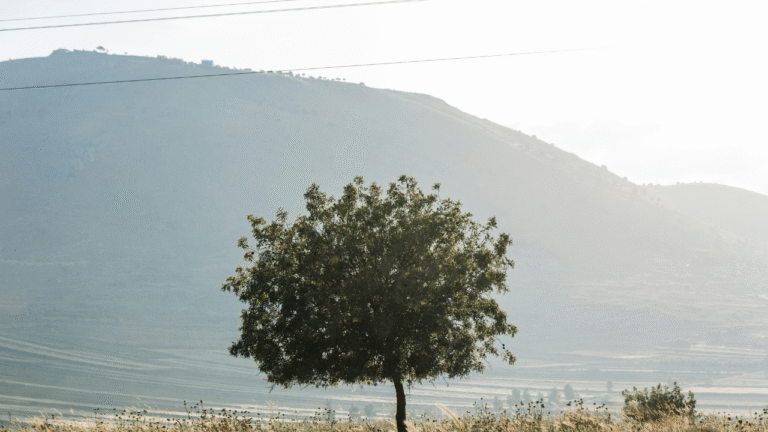
Photo by <a href="https://unsplash.com/@talesbyjen" rel="nofollow">Jen P.</a> on <a href="https://unsplash.com/?utm_source=hostinger&utm_medium=referral" rel="nofollow">Unsplash</a>
Introduction
Herbs of the Orient is a brand that stands at the intersection of ancient herbal traditions and modern design, creating a unique product range that resonates with both historical significance and contemporary aesthetics. Established with the mission to preserve traditional herbal remedies, the brand emphasizes the importance of herbal knowledge that has been passed down through generations. Its origins can be traced back to ancient cultures where herbal medicine played a pivotal role in health and wellness.
The brand’s core values revolve around authenticity, sustainability, and respect for traditional practices. By sourcing high-quality herbs and maintaining ethical relationships with local growers, Herbs of the Orient ensures that their products reflect the wisdom embedded in traditional practices. This commitment not only honors the past but also supports the livelihoods of communities that have cultivated these plants for centuries.
Herbs of the Orient recognizes that in today’s fast-paced world, many consumers seek natural alternatives to mainstream medicine. The brand aims to cater to this demand by modernizing the presentation of herbal products without compromising their integrity. With a keen focus on contemporary design, the packaging and branding of these herbal remedies are crafted to appeal to a diverse audience, bridging the gap between tradition and modernity.
Additionally, the brand actively engages in educational initiatives, aiming to highlight the benefits of various herbs and the holistic approach to health that they embody. By doing so, Herbs of the Orient not only preserves ancient knowledge but also cultivates a greater understanding among modern consumers about the vital role of herbs in achieving wellness. As culture evolves, the brand’s vision remains clear: to create an accessible interface where the richness of herbal traditions meets the expectations and aesthetics of today’s health-conscious individuals.
The Essence of Traditional Design
The Herbs of the Orient brand exemplifies a thoughtful integration of traditional design elements that resonate with its heritage and mission. At the core of this approach lies the use of cultural motifs that draw inspiration from the rich tapestry of Asian civilizations. These motifs are not merely decorative; they embody the philosophies and practices of herbal medicine, which has been revered across various cultures for centuries. Traditional symbols often reflect the principles of balance, harmony, and nature’s bounty, creating a visual narrative that is both meaningful and inviting.
The color palette employed by the brand is equally significant, as it reflects the natural world and the essence of the botanicals utilized in their products. Earthy tones such as deep greens, warm browns, and soft beiges evoke the connection to nature, while accent colors derived from traditional Asian art and culture enrich the overall aesthetic. This deliberate choice not only enhances visual appeal but also fosters an emotional connection with the consumers, who may associate specific colors with the healing properties of the herbs.
Imagery plays a pivotal role in conveying the brand’s narrative. From intricate illustrations of medicinal plants to serene landscapes that embody tranquility, each image is thoughtfully curated to honor the legacy of herbal medicine. These visuals serve as a bridge between the ancient practices and contemporary aesthetics, highlighting the brand’s commitment to preserving the essence of its roots while appealing to modern sensibilities. By blending these traditional design elements, Herbs of the Orient successfully encapsulates the profound significance of herbal therapy, creating a brand identity that is both timeless and relevant in today’s marketplace.
Embracing Modern Aesthetics
In the rapidly evolving landscape of branding, incorporating modern aesthetics has become essential for businesses aiming to connect with contemporary audiences. Herbs of the Orient has adeptly embraced this shift, integrating modern design trends alongside its traditional roots. One distinguishing feature of their branding is the minimalist design ethos. By focusing on simplicity and clarity, they eliminate distractions, allowing the core message of their products to take center stage. This approach not only enhances functionality but also enriches the overall customer experience.
Another critical element is the use of clean lines throughout their branding materials. These lines symbolize purity and precision, which align perfectly with the brand’s commitment to quality and authenticity. Such an aesthetic promotes a sense of tranquility and balance, qualities that are not only sought after by consumers today but also resonate with the brand’s heritage. The harmony of simplicity and elegance in their designs allows Herbs of the Orient to stand out in a cluttered marketplace, where consumers are often inundated with visual information.
Furthermore, the incorporation of contemporary fonts plays a significant role in bridging the gap between tradition and modernity. Herbs of the Orient selects typefaces that are both visually appealing and legible, reflecting a modern sensibility while also respecting the cultural significance of their heritage. By utilizing typography that resonates with today’s consumers, the brand successfully creates a connection that feels both relevant and respectful of its roots.
Overall, the integration of modern design principles into the branding of Herbs of the Orient not only enhances its appeal but also establishes a strong connection with a diverse audience. This fusion of contemporary aesthetics with traditional elements illustrates the brand’s ability to adapt to changing times while maintaining its core identity.
Color Psychology in Branding
The strategic use of color in branding is an essential aspect of the overall design, as it significantly influences consumer perceptions and emotional responses. In the case of the Herbs of the Orient brand, color choices are meticulously considered, not just for aesthetic value but also for their psychological implications. Each hue signifies specific qualities that resonate deeply with the target audience, fostering a connection that can be pivotal in the consumer’s decision-making process.
For instance, green is often associated with health, tranquility, and nature. By incorporating various shades of green in its branding, Herbs of the Orient aligns itself with attributes typically related to herbal remedies and holistic well-being. This strategic choice of color evokes feelings of calmness and rootedness, reinforcing the brand’s message of natural health solutions. Additionally, green serves to symbolize growth and vitality, elements that are central to the ethos of herbalism.
Moreover, warm colors such as red and orange can also play a significant role in conveying a sense of energy and enthusiasm. These hues are effective in drawing attention and fostering excitement around the brand’s products. In contrast, cooler colors such as blue and purple can evoke feelings of serenity and trust, which are crucial for consumers seeking authentic and reliable health options. The right balance among these color strategies helps to establish an emotional landscape that resonates with consumers’ desires for wellness and balance in their lives.
The integration of these colors into the branding not only enhances visual appeal but also contributes to the underlying narrative of herbs as a source of healing and well-being. By making thoughtful choices rooted in color psychology, Herbs of the Orient successfully merges traditional values with modern branding techniques, creating a potent visual identity that speaks to both the heart and mind of consumers.
Typography: A Fusion of Past and Present
The typography chosen by Herbs of the Orient plays a pivotal role in shaping the brand’s identity, effectively merging traditional script forms with contemporary design principles. By employing a selection of font styles that evoke a sense of heritage while embracing modern aesthetics, the brand establishes a unique visual identity that resonates with diverse audiences. The careful selection of typefaces reflects not only the cultural significance but also the evolving nature of design in today’s market.
In the context of Herbs of the Orient, traditional typographic elements are prominent, drawing inspiration from classic Eastern scripts that have stood the test of time. This connection to the past serves to honor the rich cultural heritage behind the products, promoting an appreciation for the origins of the herbs and their historical uses. The incorporation of elegant strokes and fluid forms in the traditional fonts reinforces the idea of authenticity, which is a cornerstone of the brand’s messaging.
Simultaneously, the brand explores modern typography trends, adopting clean lines and minimalist styles that reflect current aesthetic preferences. This juxtaposition of old and new not only enhances readability but further solidifies the brand’s appeal to a contemporary audience. For instance, the use of sans-serif fonts for product information lends a crisp and modern touch, while carefully chosen serif fonts providel the nuance that references the past.
This thoughtful integration of typography ultimately conveys the essence of Herbs of the Orient, projecting a brand image that is both timeless and relevant. By seamlessly fusing traditional script forms with modern typographic trends, the brand successfully communicates its message of quality, authenticity, and cultural appreciation. Such a typographic approach is essential in creating a lasting brand identity that resonates with consumers in an increasingly competitive market.
Packaging Design: A Visual Narrative
The packaging design of Herbs of the Orient serves as a captivating visual narrative that reflects both tradition and modern aesthetics. The brand employs traditional motifs that are synonymous with Oriental culture, integrating them into a framework that resonates with today’s consumers. This duality not only emphasizes the brand’s dedication to authenticity but also enhances the overall product appeal in a competitive marketplace.
At the heart of the packaging design is the careful consideration of color, texture, and form. Shades of deep red and gold symbolize prosperity and health, while intricate patterns may evoke the rich heritage of Asian artistry. The design elements are not arbitrary; they convey historical significance while remaining visually appealing to a contemporary audience. By utilizing sophisticated graphics alongside these traditional components, Herbs of the Orient successfully tells a story that bridges the gap between the two eras.
A notable feature of the packaging is its usability, which further reinforces the user experience. The thoughtful structure allows for not only aesthetic appeal but also functionality, making it easy for consumers to handle, store, and utilize the products. Enhanced with modern materials, the packaging maintains environmental considerations, thereby aligning with the growing consumer demand for sustainable practices. Eco-friendly elements and recyclable materials affirm Herbs of the Orient’s commitment to responsible branding without compromising on style.
Ultimately, the packaging design transcends being merely a functional covering; it serves as an invitation into the world of Herbs of the Orient. By harmoniously blending traditional motifs with modern aesthetics, the brand creates an immersive experience that resonates with consumers on multiple levels. This strategic approach elevates both the product and the brand, making it a memorable choice in the realm of herbal offerings.
Cultural Significance: Imagine the Roots
The design choices made by Herbs of the Orient are deeply intertwined with the rich cultural heritage from which the brand draws inspiration. Each element within the brand’s visual identity is chosen with careful consideration, reflecting the traditional practices rooted in Eastern culture while simultaneously adapting to contemporary aesthetics. This harmonious blend showcases respect for heritage, honoring age-old wisdom while meeting modern consumer expectations.
For instance, the use of vibrant colors and intricate patterns often found in Eastern art forms speaks to the historical significance of those designs. These elements are not merely decorative; they symbolize various cultural narratives and philosophies that have been passed down through generations. By integrating such traditional motifs into the brand’s design language, Herbs of the Orient effectively communicates its commitment to authenticity and cultural appreciation.
Furthermore, the materials selected for branding and packaging are reflective of natural resources endemic to the Orient, which reinforces the brand’s commitment to environmental sustainability and local craftsmanship. Herbs of the Orient’s designs evoke an understanding of nature’s beauty, fostering a connection between consumers and the landscape where these herbs thrive. Each product encapsulates a story, allowing customers to experience both the nostalgia of tradition and the novelty of modernity.
This unique juxtaposition allows Herbs of the Orient to resonate with a diverse demographic. The contemporary reinterpretation of traditional design attracts not only those who seek familiarity and comfort from their cultural roots but also a younger audience interested in sustainability and meaningful narratives. Thus, the brand successfully navigates the fine line between honoring ancient traditions and embracing modern sensibilities, ultimately contributing to a richer consumer experience.
Consumer Engagement: Building a Community
The integration of tradition with contemporary design elements in the branding of Herbs of the Orient not only establishes a unique aesthetic appeal but also plays a vital role in consumer engagement. By weaving cultural heritage into the modern narrative, the brand fosters a profound connection with its audience, transforming passive consumers into active community members. This engagement strategy is instrumental in cultivating loyalty, as it allows consumers to feel a sense of belonging to a larger story.
One of the pivotal strategies the brand employs is robust social media engagement. Platforms such as Instagram and Facebook serve as interactive lifelines, enabling Herbs of the Orient to share its story while simultaneously inviting consumers to share theirs. Through visually appealing content that highlights the rich tradition behind the herbs and their uses, the brand creates a dynamic dialogue. This fosters community involvement, as consumers are encouraged to contribute personal anecdotes, recipes, or experiences related to the products. By capturing this user-generated content, the brand not only reinforces its heritage but also promotes a sense of shared identity among consumers.
In addition, feedback loops are key to building a thriving community. Herbs of the Orient actively seeks customer input through reviews and surveys, demonstrating a commitment to their audience. By valuing and acting upon consumer feedback, the brand enhances its product offerings and creates a responsive environment where consumers feel heard and appreciated. This approach not only strengthens loyalty but also aligns the brand’s evolution with consumer preferences and expectations.
In conclusion, the harmonious blend of tradition and modernity in the brand design of Herbs of the Orient significantly contributes to effective consumer engagement. Through community building strategies, social media interaction, and a responsive feedback process, the brand cultivates lasting connections with its audience, fostering a sense of belonging and shared heritage.
Conclusion: The Future of Herbs of the Orient Design
The Herbs of the Orient brand has successfully embarked on a journey that harmonizes traditional design elements with modern aesthetics, resulting in a unique visual identity. This integration showcases the brand’s deep respect for its cultural heritage while appealing to contemporary consumers. As the market evolves, the necessity for brands to adapt becomes increasingly crucial. This brand stands as a compelling example of how merging time-honored practices with modern design principles can create a distinctive market presence.
Looking ahead, the future of Herbs of the Orient’s design strategy will likely continue to draw from both its traditional roots and the evolving trends in branding. The incorporation of sustainable practices and eco-friendly materials is anticipated to be a focal point, aligning with the growing consumer demand for responsible and ethical production methods. By leveraging traditional techniques alongside innovative approaches, the brand can not only conserve its heritage but also respond positively to market shifts.
Furthermore, as technology plays a significant role in modern branding, the potential for digital expressions of the brand will expand. Enhanced online platforms and engaging digital content can be utilized to reach a broader audience, ensuring that the beauty of traditional design is not only preserved but celebrated across various media. As Herbs of the Orient embraces these future trends, it remains committed to delivering quality that reflects both its origin and its vision for innovation.
In conclusion, the path forward for Herbs of the Orient will undoubtedly require a balance of tradition and modernity, crafting a narrative that respects its past while confidently stepping into the future. The continued dedication to this harmonious blend will not only strengthen the brand’s identity but also ensure its relevance in an ever-changing marketplace.






